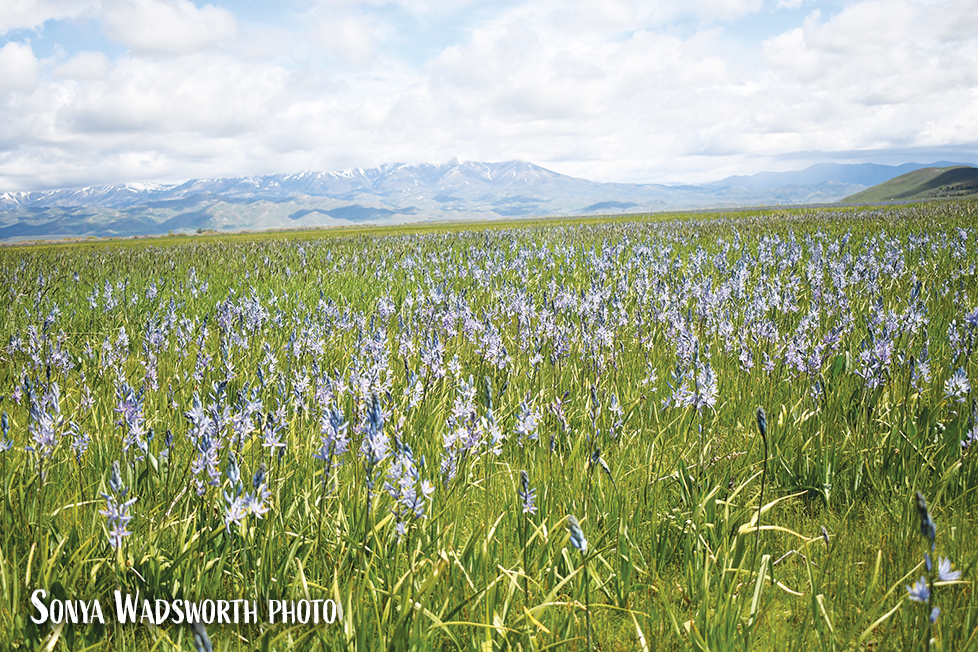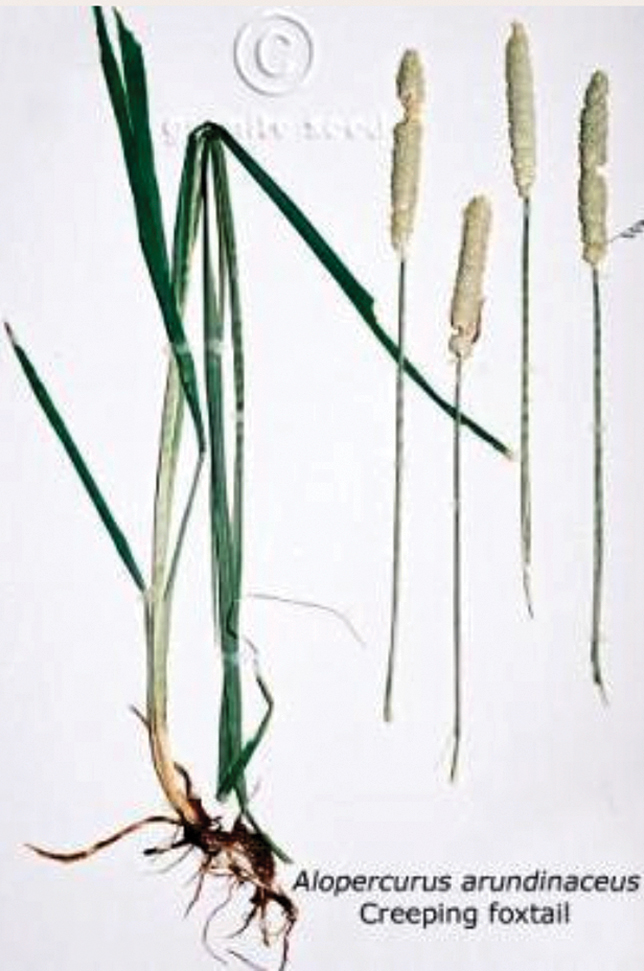Garrison creeping meadow foxtail wages war on Camas Prairie

The lush Camas Prairie scenery where Garrison creeping meadow foxtail is now growing.
By LORI ANN EDMO
Sho-Ban News
FAIRFIELD — The Bannock War of 1878 began because of settlers pigs digging up the roots on the Camas Prairie near Fairfield when Buffalo Horn and his warriors led the campaign into Oregon and Montana.
The Camas Prairie was included in the 1868 Fort Bridger Treaty but the area was excluded because of a stenographer error spelling it Kansas Prairie.
The Prairie was also noted in the Long Tom Creek Treaty when Chief Taghee said he wanted the right to camp and dig roots on the Camas Prairie when going to Boise City to trade. “Some of my people have not horses. They can remain at Camas Prairie and dig roots while others go on,” he said in historical records.
Regardless, the Camas Prairie still has great significance to the Shoshone-Bannock Tribes as tribal members still return their in late May and June to dig the camas root as it’s considered a traditional food staple. According to the Shoshone-Bannock Tribes Language and Culture Preservation Department in the Shoshone and Bannock language pasigo and tsuga are the words for camas.

Up close view of the invasive grass.
LCPD notes the area commonly known as the Great Camas Prairie situated in Camas County holds a particularly important place in Shoshone-Bannock history and life. It’s much more than a food source for the Shoshone and Bannocks – it’s a gathering place at the crossroads of the Tribes extensive regional trade network.
Now the Tribes are waging a second Bannock War and this time it’s on an invasive grass called Garrison creeping meadow foxtail that is currently present on 25 to 30% of the prairie that has potential to double every five years according to researchers former Wildlife Management Area (WMA) Manager Terry Gregory.
Garrison’s creeping meadow foxtail is a long-lived cool season perennial grass first introduced in the late 1800s as a pasture grass from Eurasia. It grows three to six feet tall and forms in groups through underground stems (rhizomes). It was planted in the Camas Prairie Centennial Marsh (CPCM) and surrounding areas for forage, hay production and erosion control. Idaho doesn’t recognize it as invasive but tribal members who annually harvest have noticed it.
The State of Idaho Fish and Game manages the CPCM. The current IDFG management plan for the prairie does not prioritize camas as a species to protect.
LCPD plans to work with Idaho Fish and Game to develop a management plan for the WMA area that includes camas, the Fort Bridger Treaty of 1868 and reduce and/or eliminate the use of chemical control methods currently used on the CPCM. They intend to become a co-tenant of the CPCM. Joint activities will be conducted including hand pulling and seed head removal at the CPCM gathering area during the Camas Prairie Homecoming, drone surveying and workshops to raise awareness and to engage the community.
LCPD has had introductory conversations with Idaho Fish and Game and are seeking support from Idaho Natural Resource Conservation Service, Idaho Bureau of Land Management, Idaho State University, Northwest Center for Alternatives to Pesticides with the potential to include other entities for support.
The project addresses a critical threat to the CPCM and seeks to prioritize the Tribes rights and responsibilities.





